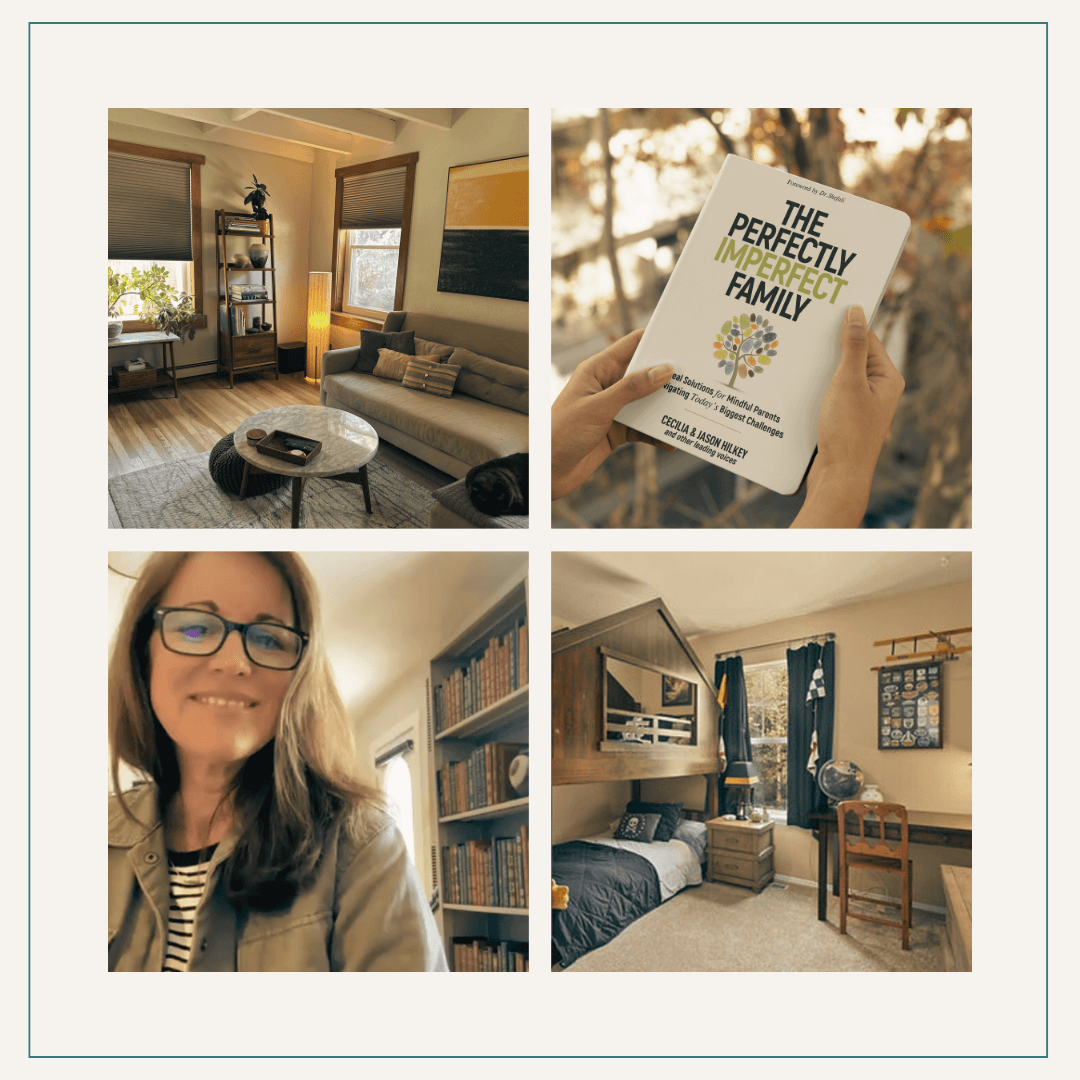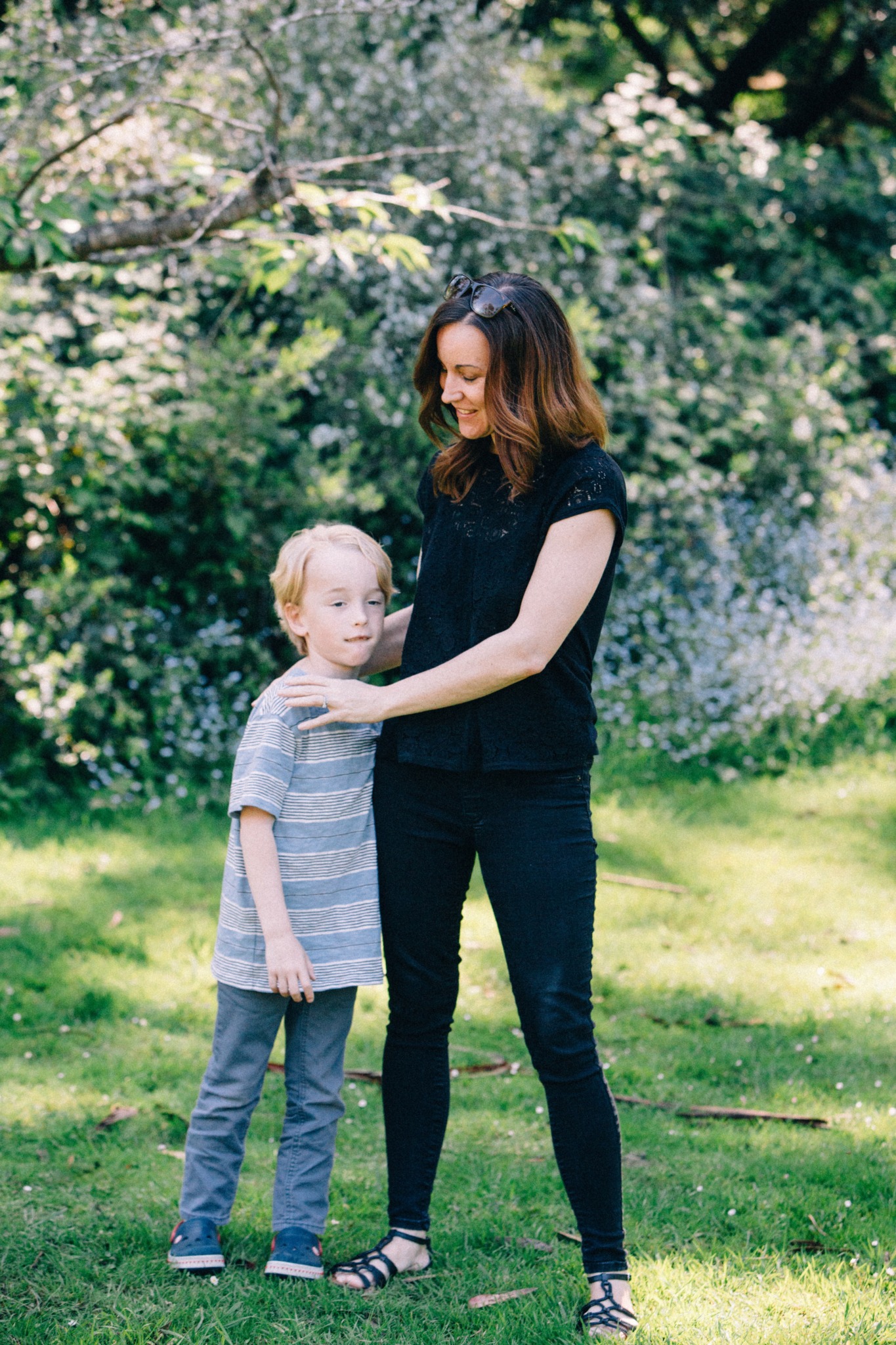We were lucky to catch up with DANA DENNING recently and have shared our conversation below.
Alright, DANA thanks for taking the time to share your stories and insights with us today. One of the things we most admire about small businesses is their ability to diverge from the corporate/industry standard. Is there something that you or your brand do that differs from the industry standard? We’d love to hear about it as well as any stories you might have that illustrate how or why this difference matters.
Absolutely. Nourished Nest was created as a quiet rebellion against the traditional design world.
In conventional interior design, the focus is often on how a space looks. But for families raising complex kids, it’s not about the look – it’s about the feel. It’s about whether your child can move from one room to the next without melting down. Whether you feel calm in your kitchen or completely overstimulated by it. Whether your home supports your nervous system, or constantly sends it into overdrive.
That’s the gap I saw and that’s where Nourished Nest lives.
I ask questions most designers don’t: How does this room feel at 7:30 pm when everyone’s falling apart? What sensory triggers are hiding in plain sight? Where does your family go to reconnect or decompress?
I once worked with a mom who told me, “I just want to stop feeling like I’m constantly on edge.” That hit me hard, because I’ve been there. We didn’t just declutter her space, we removed visual noise, softened the lighting, created a corner for quiet connection, and made small layout shifts that helped the whole house feel more breathable. A few weeks later, she told me, “Everything feels lighter now.” Not because she changed her parenting strategy, but because the space finally stopped working against her.
That’s the heart of the work I do. I’m not here to sell a style, I’m here to support families in creating homes that feel like allies, not obstacles.

DANA, before we move on to more of these sorts of questions, can you take some time to bring our readers up to speed on you and what you do?
My name is Dana Denning, and I’m the founder of Nourished Nest. I live in New Mexico now, but my heart is still in Southern California where I grew up, and where I hope to return in the not-so-distant future.
I help families, especially those raising neurodiverse, sensory-sensitive, or emotionally intense kids, create home environments that truly support regulation, connection, and calm. My work lives at the intersection of holistic interior design, nervous system support, and the everyday realities of parenting kids with big needs.
I didn’t come from a traditional design background. I came to this work as a mom who was burnt out, over-researching everything, and constantly trying to figure out why all the parenting tools weren’t sticking. What finally clicked was realizing that the environment was working against everything we were trying to do.
That’s when I started rethinking what a “supportive home” really means. And it had nothing to do with trendy decor.
Today, I offer 1:1 and group virtual coaching and self-paced courses that blend design with sensory and emotional wellness. It’s not about creating a picture-perfect space, it’s about creating one that helps your child (and you) breathe easier, connect more, and feel like home is actually helping.
What sets Nourished Nest apart is that it doesn’t just look at what’s pretty, it looks at what’s practical, sustainable, and nervous system-friendly. I’m not here to sell an aesthetic. I’m here to co-create spaces that work for families who often feel like the world wasn’t built with them in mind.
I’m most proud of the messages I get from parents who say, “We didn’t change our kid—we just changed the space. And everything feels different now.” That’s the win. That’s the why.
If you’re feeling overwhelmed or like your home is one more thing you’re managing instead of a place that helps you thrive, this work is for you.
Let’s talk about resilience next – do you have a story you can share with us?
Resilience didn’t come for me in a single breakthrough moment, it came in layers.
I spent years leading visual merchandising for major global retailers, managing fast-paced rollouts and creating spaces designed to influence how people feel, move, and buy. I was trained to think visually, strategically, and always stay ten steps ahead.
Then I became a mom, specifically, a mom to a beautifully complex kid with sensory sensitivities and big emotions. And suddenly, everything I knew about space had to be reimagined. The environments I once crafted so confidently no longer applied at home. What we needed wasn’t just functional; it needed to feel safe on a nervous system level.
So I started over. I studied traditional and holistic interior design, explored the connection between environment and emotional regulation, and began using all the senses as my guide – sight, sound, touch, even scent. I didn’t want to just make a home that looked good – I needed one that helped us feel grounded, connected, and calm.
That’s how Nourished Nest was born.
Resilience, for me, meant being willing to let go of what I thought I knew, and lean into something deeper, something slower, more intentional, and honestly, more real. Holistic interior design gave me a language and a toolkit to create spaces that support families like mine. Not just aesthetically – but emotionally, physically, and energetically.
Learning and unlearning are both critical parts of growth – can you share a story of a time when you had to unlearn a lesson?
One of the biggest lessons I had to unlearn was the idea that if I could just get everything just right – my routines, my kid’s behavior, my home – I could somehow stay ahead of the overwhelm. I thought that if I could control the environment perfectly, I could create calm. What I didn’t realize was that the constant pressure to keep things under control was adding to the stress I was trying so hard to avoid.
Through both parenting and my work as a holistic interior designer, I’ve learned that calm doesn’t come from control – it comes from support. And often, that support starts with small, practical shifts in our environment. It’s not about a total home makeover or chasing a curated aesthetic. It’s about reducing sensory triggers, creating clear flow in your space, and making room – literally and emotionally – for connection and regulation. When we change how a space functions to support how our family actually lives and feels, everything starts to feel just a little easier.
That’s the heart of what I do and it’s why I chose to contribute to The Perfectly Imperfect Family. This book is a collection of honest, deeply human stories from parents and professionals around the world who are doing things differently – because they had to. I wanted to add a voice that says: sometimes what feels broken isn’t you or your child – it’s the environment that’s not working for you yet.
My chapter shares how seemingly small design choices – like softening lighting, creating a quiet nook, or rethinking the layout of a high-stress area – can have a huge impact on how your family moves through the day. It’s not about getting it perfect. It’s about creating a space that meets you where you are and helps your nervous system take a breath.
Parenting today can feel like a constant juggling act. There’s pressure to do it all and make it look effortless. But the truth is, we don’t need more perfection – we need more honesty, more grace, and more tools that actually help. That’s what this book offers, and that’s what I hope my chapter and my work gives other parents’ permission to explore.
Contact Info:
- Website: https://www.nourishednest.com/
- Instagram: https://www.nourishednest.com/
- Facebook: https://www.facebook.com/people/Nourished-Nest
- Linkedin: https://www.linkedin.com/company/nourished-nest
- Other: The Perfectly Imperfect Family: amazon.com/author/nourishednest
Image Credits
Image: Ingrid Nelson / Myrtle & Marjoram


